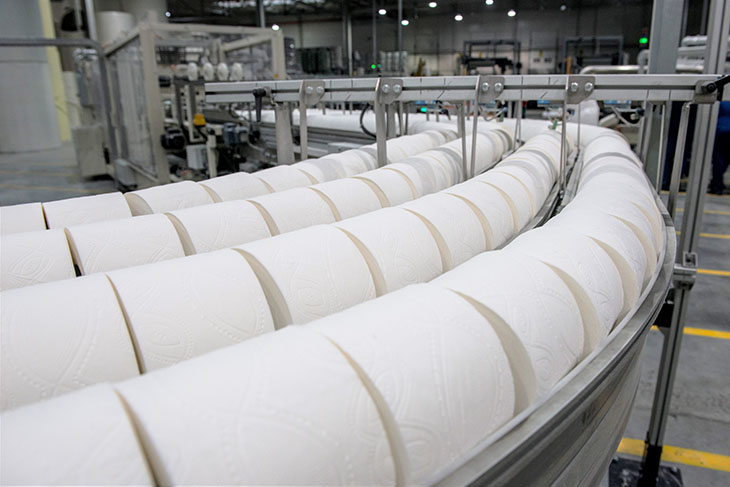Robots are essential to modern manufacturing. As labor shortages grow, they’re only becoming more important. These machines are also becoming increasingly useful, thanks to advancements in the smaller technologies they rely on. Magnets offer some of the most crucial of these components.
Magnets may not initially seem like a revolutionary technology, but they play a significant role in how many industrial robots operate. Here are five of the leading use cases for magnetic systems in manufacturing robots.
Increasing Robot Precision
One of the most important roles of magnets in robot manufacturing is to guide moving robotic parts. Electromagnetic sensors can measure proximity, movement, speed, position and more to help automated tools operate more precisely.
Some magnetic sensors can measure frequencies on a nanometer scale, making them far more precise than human senses. That precision enables industrial robots to handle more delicate tasks like wiring or placing small components in electronics. That way, manufacturers can speed up these workflows while removing room for human error.
Magnetic movement sensors also make robots safer to be around. They can detect obstacles quickly and accurately, informing robotic parts to stop moving or adjust their course to avoid hitting nearby workers or other machines. Those safety improvements, in turn, make robots a more viable solution for smaller workspaces where they’ll work more closely with humans.
Guiding Mobile Robots
Similar magnetic systems help mobile robots move throughout a factory or warehouse. Robots can navigate by measuring electromagnetic fields around them to avoid colliding with obstacles. Magnets can also help mobile robots stay upright and hold things correctly by measuring their pitch, yaw and roll, which indicate their position in relative space.
Magnetic systems don’t have to be that advanced to guide mobile robots, either. Manufacturers can simply lay metal tracks in the ground throughout a factory that robots follow via magnets. As a result, even facilities with less capital or technical expertise can implement material-handling robots to move throughout the area safely.
Material handling is an ideal task to automate because it can be dangerous and inefficient when humans do it. Magnetic guiding systems make this advantageous use case more accessible to a wider range of manufacturers.
Improving Robots’ Grip
Many manufacturing robots across different use cases must grip parts or products, either to move or work with them. Striking the right balance between gripping things firmly and being delicate enough not to damage them has proved challenging for some robots. Magnets provide an ideal solution.
Electromagnets let robots handle metal parts without advanced end-of-arm tooling. These magnets can turn on and off on command, so robots can activate them to hold a metal object and then deactivate them to let go instantly. Manufacturers can also control the strength of the magnetic force, making it easier to balance grip strength with delicacy.
For more sensitive applications, electromagnetic sensors provide tactile feedback for soft robotic grippers. The real-time, precise measurements from these sensors direct robots to increase or decrease their gripping pressure to avoid damaging delicate objects while holding them.
Making Robots More Adaptable
Similarly, electromagnetic sensors can make robots more flexible — an attribute robotic systems traditionally struggle to achieve. By measuring magnetic fields in real-time, robot grippers can detect and respond to slippage so they keep holding an object even if it moves or becomes heavier. That adaptation is crucial to handling a wider range of materials in less consistent environments.
Proximity and movement-detecting magnetic sensors also remove the need for pre-defined tracks for robots to navigate safely. Consequently, robots with these technologies can operate in different environments without adjustment. Manufacturers could then implement them more easily or adjust their facility layouts without disrupting robotic operations.
Historically, robots have been excellent for efficiency but not for adaptability. Magnet’s real-time guidance helps them overcome this boundary to work in processes with less predictability or standardization.
Refining Quality Inspection
Among specific applications in manufacturing, quality control is one of the most common use cases for robots. These processes’ repetitive and detail-oriented nature makes them ideal for automation. Magnets can expand robots’ capabilities in this realm.
Electromagnetic sensors can detect surface imperfections or test other physical product features quickly and accurately. Other magnets can remove metallic impurities from products to meet higher cleanliness standards. That’s particularly important in pharmaceutical manufacturing, where water may fail conductivity limit tests if there’s too much metal present.
More precise and powerful magnets can improve these sensors and remove more metallic contaminants. As this technology improves, robotic quality inspection becomes even more advantageous to manufacturers. These advancements enable high-quality inspection and prevention processes without creating production bottlenecks.
Magnets Are a Crucial Part of Manufacturing Robots
When many people think of robotic components, magnets likely aren’t the first thing to come to mind. Despite these preconceptions, magnets are crucial to many manufacturing robotics applications.
These five use cases are just a sample of the myriad ways magnets take robotic technology further. Advances in these magnet applications will improve industrial robots as a whole, enabling a new stage of Industry 4.0.

























